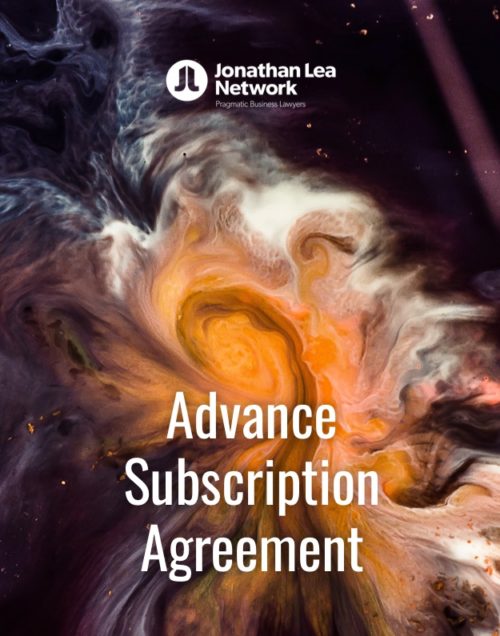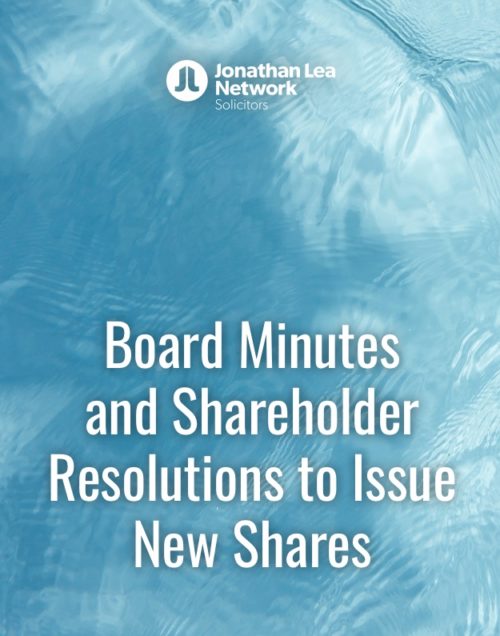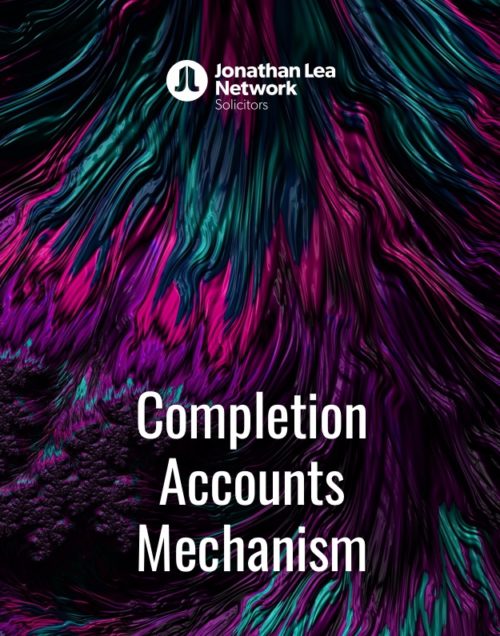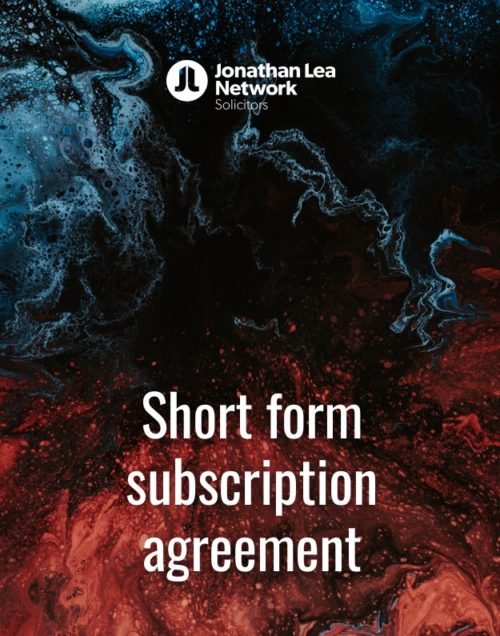Convertible Loan Note
£6.99
This product constitutes an easily adaptable convertible loan note template, together with a set of tailored guidance notes which aim to set out how to correctly fill-out the template.
Further down the page are our guidance notes relating to this template which you will also receive as a separate document when you buy the product.
Guide to the Jonathan Lea Network convertible loan note template
This guide aims to set out how to correctly fill-out the convertible loan note template and explain all significant provisions so as to allow you to put into effect a valid and legally binding loan note instrument.
These products are intended to be used as templates only and must be adapted to the particular circumstances of your case.
Your input is required at the parts highlighted in yellow and the wording inside the square brackets which we have included explains clearly the information that should be inserted. You are advised to fill in the wording in square brackets in lower case unless directed otherwise. Any figures should be entered in numerical form. The brackets should be removed after the amendments are made. In addition, clause and paragraph numbers may need to be amended.
Clause breakdown
Clause 1 (Interpretation)
Clause 1.1 sets out the definitions that will apply throughout the loan note instrument. Clauses 1.2 – 1.16 and 1.19 are standard interpretation clauses that are used in most commercial contracts. Clauses 1.17 – 1.18 are standard interpretation clauses in most convertible loan note instruments.
Please note that the definition of “Debenture” will only be needed where loan notes being issued are secured loan notes.
Clause 2 (Amount and description of notes)
This clause sets out the maximum amount of loan notes to be issued, confirms the type of loan notes being issued, along with the interest rate that accrues on each loan note and the amount of loan notes the company will be issuing in multiples of.
Clause 3 (Status of notes)
Clause 3.1 means each loan note will have an equal right of payment. No noteholder will have priority over any other noteholder in receiving any monies under the instrument. All unsecured creditors in an administration or liquidation must share equally any available assets of the company, or any proceeds from the sale of any of those assets, in proportion to the debts due to each creditor.
Clause 3.2 provides that the notes will have the benefit of the conditions and that the company and noteholders are bound by those conditions.
Clause 4 (Use of proceeds)
This clause establishes what the loan notes will be used for, preventing misuse of the monies.
Clause 5 (Repayment of notes)
Clause 5.1 states that the timing and manner of repayment of the notes is laid out in the conditions, which will need to be tailored to your specific requirements.
Clause 5.2 enables the company to automatically cancel any repaid notes.
Clause 6 (Interest)
This clause provides that interest will accrue on the notes which is governed under the conditions and will need to be tailored to your specific requirements.
Clause 7 (Certificates)
Clause 7.1 provides that each noteholder is entitled to a certificate for the total amount of notes registered in their name.
Clause 7.2 reduces the burden on the company by allowing the company to only issue one certificate to one holder if they jointly hold notes with another in the company.
Clause 7.3 simply states what will be included in the certificate. Please note you will have to send the conditions with any certificate being issued to the noteholders.
Clause 7.4 states what happens in the event of repayment or transfer of part of the noteholder’s notes.
Clause 8 (The register)
Under the Companies Act 2006 the company is required to keep a register of any noteholders, upon which the noteholders must have a right to inspect the register or be issued a copy of it.
Please note that the company must register the issue of any loan notes as soon as practicable and at least within two months. A company is also required to register a transfer of notes within two months of the transfer being lodged.
Clause 9 (Notes not to be quoted)
This clause will reduce the chances of noteholders putting forward the argument that the loan notes are likely to become available for purchase by others.
Clause 10 (Security)
This clause will only be required if the loan notes being issued are secured as opposed to unsecured.
Clause 11 (Set-off)
This clause prevents the company from setting-off payments to the noteholders in respect of other matters (unless required by law).
Clause 12 (Meetings of noteholders)
Any meetings of the noteholders are held in accordance with Schedule 3.
Clause 13 (Variation)
This clause enables the company to vary or alter provisions under the instrument subject to receiving the prior written consent from an investor majority.
Clause 14 (Enforcement and third party rights)
The right of noteholders to enforce the terms of the instrument are expressed in this clause. This reflects the commercial aim of the document and is consistent with the Third Party Rights Act 1999 which provides for enforcement of a contract by a person who is not party to the contract.
Clause 15 (Notices)
Notices being given to or by noteholders must follow the provisions under part 3 of schedule 2.
Clauses 16 (Governing law and jurisdiction)
This is a standard clause and is drafted as it would be for most commercial contracts.
Schedule 1 (Form of certificate)
This schedule sets out the form of the loan note certificate to be issued. The issuing company should always ensure that the conditions under schedule 2 are attached to the certificate.
Schedule 2 (The conditions)
Part one governs the interest rate that accrues on each loan note, when the noteholders must be repaid, the timing of payment, when the notes can be redeemed by the noteholder along with any interest accrued, events that result in immediate redemption of the outstanding amounts owed to noteholders (otherwise considered as events of default) and the actions the company must take when redeeming the notes.
Part two provides that conversion of the notes into fully paid shares shall occur on the earliest relevant fund raising (which you may tailor to your specific requirements as to what constitutes sufficient fundraising for the notes to then convert at) or on a change of control, unless the investor majority serve a conversion notice on the company prior to those events and in line with the procedures under this part. The company are also required to serve a conversion notice on the noteholders, if and when a conversion event takes place, in line with the procedures under this part. This part also provides for further procedures that the company must follow upon conversion. In addition, paragraph 2.6 ensures the directors have the authority to allot the shares pursuant to the notes and that pre-emption rights will not apply to shares to be issued on a conversion of notes. Without this authority being in place, the noteholders would have no comfort that they would be able to convert notes into shares in the company’s share capital.
Part three covers other formalities relating to the notes and anything associated with them (e.g. signature, effective delivery etc.).
Schedule 3 (Meetings of noteholders)
This schedule sets out the rules applicable to meetings of noteholders, including calling meetings, meeting procedure, voting and proxies. It is only relevant if there is more than one noteholder. Please amend this schedule to meet the requirements of the company/noteholders.
Where your input is required on the template
All areas that require your input have been highlighted in yellow within the template. By way of summary, you will need to insert or amend the following information:
- Company name (please see cover page);
- Company name (please see page 2);
- Company number (please see page 2);
- Company’s registered office address (as at Companies House) (please see page 2);
- The date the resolution was passed allowing the directors to create the loan notes (please see page 2);
- The number and nominal amount of the loan notes being created along with whether they are secured or unsecured loan notes (please see page 2);
- You may wish to delete “or which are permitted under the Articles” if no such permission exists to issue equity securities to employees or directors (please see page 2);
- Number of business days you would like the conversion date to occur after service of the conversion notice (please see page 3);
- The discount percentage associated with the conversion price when converting the loan notes into shares upon a fund raising (please see page 3);
- The amount per share upon a change of control (please see page 3);
- The debentures definition will only need to be included where the loan notes are secure loan notes (please see page 3);
- You may wish to delete “or a duly authorised committee of that board” if no such committee will exist (please see page 3);
- Fund raising details for the company including the amount, deadline date and whether it is single or multiple issue of shares (please see page 4);
- The percentage of the noteholders that qualifies as an investor majority (please see page 4);
- Details on the notes being issued including amount, whether they are secure or unsecure and the year of issue (please see page 4);
- Nominal value of the company’s ordinary shares (please see page 4);
- Relevant fund raising details including amount, deadline date and whether it is a single or multiple issue of shares (please see page 4);
- You may wish to delete “and that person’s personal representatives, successors and permitted assigns” if you don’t wish for such a person to fall under the definition of a person for the purposes of the agreement (please see page 5);
- If your company has no holding company or subsidiary clause 1.10 can be deleted (please see page 5);
- Clauses 1.14 and 1.15 can be amended to take into account future legislative changes or basing the agreement on the legislation in existence at the time (please see page 5);
- Amount of the notes being issued (please see page 6);
- Description of the notes including interest rate, whether they are secure or unsecure and the amount they will be issued in multiples of (please see page 6);
- Whether the notes are secure or unsecure (please see page 6);
- How the proceeds will be used (please see page 7);
- You may wish to delete the highlighted part under clause 8.1 if the company will only ever be keeping and maintaining the register at their registered office (please see page 8);
- You may wish to keep a record of the principal monies you have paid up on any notes held by each noteholder (please see page 8);
- The security clause will only need to be included if the notes are secure loan notes (please see page 8);
- Number of business days within which the company will be required to send to the noteholders of any variation (please see page 9);
- You may wish to ensure the above requirement is met before any variation is binding and will have to amend clause 13.4 accordingly (please see page 9);
- Details required for ‘Schedule 1 – Form of certificate’ include:
- Certificate number (please see page 11);
- Date of issue (please see page 11);
- Amount of the notes being issued (please see page 11);
- Company name (please see page 11);
- Amount, whether the notes are secure or unsecure and year of issue (please see page 11);
- Date of resolution allowing directors to issue the notes. Please note you may also want to delete “a duly appointed committee of” if no such committee exists (please see page 11);
- Name of noteholder (please see page 11);
- Amount of notes the noteholder holds, whether the notes are secure or unsecure, the year of issue and date the notes were entered into by the company (please see page 11);
- The multiple that the notes will be issued in (please see page 11);
- Name of company (please see page 12);
- Execution details required to make the certificate legally binding (please see pages 12-13);
- Details required for ‘Schedule 2 – The conditions’ include:
- Interest rate percentage (please see page 14);
- Date the investor majority may elect to have the notes redeemed by (please see page 14);
- Whether any other rate should be used as opposed to the interest rate in the event of the company failing to pay redemption monies on time (please see page 14);
- Date for redemption of the notes (please see page 15);
- Number of business days redemption must occur after a material breach by the company (please see page 15);
- Number of business days before the redemption date that the investor majority must provide written notice by in order to exercise the right to redeem the notes, as well as the number of business days the company must pay the noteholders by in the event of redemption (please see page 15);
- Further business day requirements in the scenario under part one, paragraph 5(d) (please see page 16);
- Bank to be used in the event of a noteholder giving incorrect bank information (please see page 16);
- Number of business days before a fund raising where the investor majority must serve a conversion notice by (please see page 17);
- Number of business days prior to the date (date for redemption of the notes at page 15) (please see page 17);
- Price per share for the converted ordinary shares (please see page 17);
- Number of business days before a proposed conversion event the company is required to give notice to the noteholders by (please see page 17);
- Number of business days that must occur without a conversion event happening before the conversion notice is revoked (please see page 17);
- Class of shares to be confirmed by you relating to what the notes will be upon conversion. We have inserted ordinary being the standard class of share (please see page 17);
- You may wish to disapply paragraph 2.6(a) under part 2 if you do not wish to provide such a protection to the noteholders (please see page 18);
- Amend paragraphs 2.6(c) and (d) under part 2 as you require (please see page 18);
- You may wish to allow a noteholder to transfer their notes in accordance with the company’s articles (please see page 19);
- The amount of notes can be transferred in multiples of (please see page 18);
- Details required for ‘Schedule 3 – Meetings of noteholders’ include:
- Nominal amount of notes the noteholders must collectively own to convene a meeting (please see page 22);
- Number of days’ notice required for each meeting to take place (please see page 22);
- Number of noteholders that must be present or number of nominal amount of notes required to be held by each noteholder in order for there to be a quorum at the meeting (in other words a valid meeting) (please see page 22);
- How long until a meeting without a valid quorum will be adjourned, number of days before the adjourned meeting, quorum required for the adjourned meeting and number of days notice required for each noteholder before the adjourned meeting can take place (please see page 22);
- Time allowed for a company nominated chairman to be late for a meeting before the noteholders are allowed to select their own chairman (please see page 22);
- Number of nominal amount of notes a noteholder is required to hold to demand a poll (please see page 23);
- You may or may not wish to give the chairman a casting vote in the event of deadlock (please see page 23);
- Nominal value of the notes (please see page 23);
- Notice required regarding the instrument appointing a proxy to stand in the place of a noteholder at a scheduled meeting (please see page 24);
- You may wish to amend what amounts to a successful passing of a special resolution and written resolution for the noteholders at paragraphs 19 and 20 to whatever majority you wish (please see page 25);
- On the final (execution) page, execution details required to make the instrument valid and legally binding (please see page 26).
Please note that being a template, there may always be clauses contained within the template that you wish to remove, include or amend.









